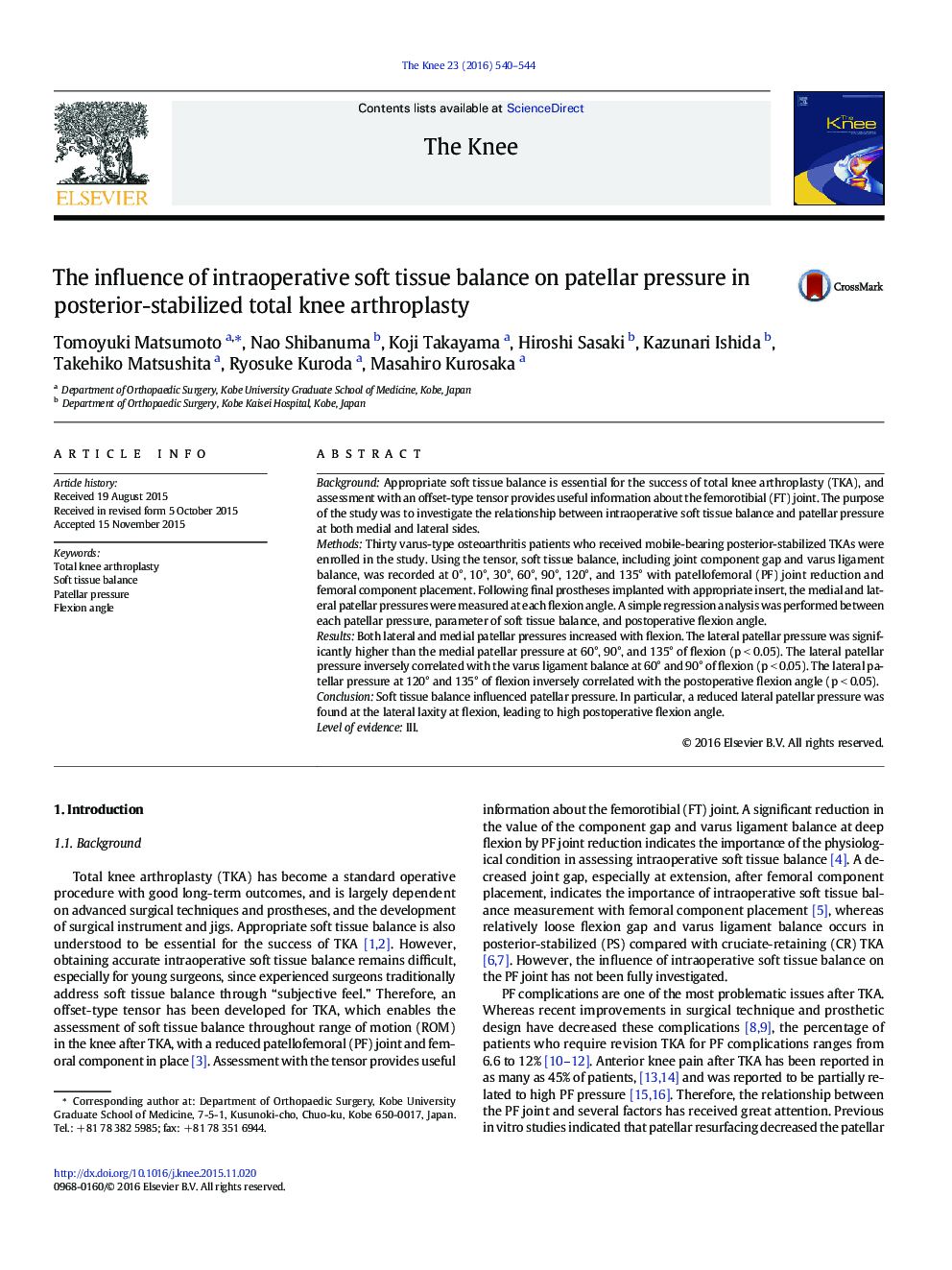| کد مقاله | کد نشریه | سال انتشار | مقاله انگلیسی | نسخه تمام متن |
|---|---|---|---|---|
| 6211165 | 1267205 | 2016 | 5 صفحه PDF | دانلود رایگان |
- Soft tissue balance and patellar pressure were investigated in PS TKA.
- Both lateral and medial patellar pressures increased with flexion.
- Patellar pressure was higher at the lateral than the medial side during flexion.
- Lateral patellar pressure inversely correlated with lateral laxity during flexion.
- Lateral patellar pressure during flexion inversely correlated with flexion angle.
BackgroundAppropriate soft tissue balance is essential for the success of total knee arthroplasty (TKA), and assessment with an offset-type tensor provides useful information about the femorotibial (FT) joint. The purpose of the study was to investigate the relationship between intraoperative soft tissue balance and patellar pressure at both medial and lateral sides.MethodsThirty varus-type osteoarthritis patients who received mobile-bearing posterior-stabilized TKAs were enrolled in the study. Using the tensor, soft tissue balance, including joint component gap and varus ligament balance, was recorded at 0°, 10°, 30°, 60°, 90°, 120°, and 135° with patellofemoral (PF) joint reduction and femoral component placement. Following final prostheses implanted with appropriate insert, the medial and lateral patellar pressures were measured at each flexion angle. A simple regression analysis was performed between each patellar pressure, parameter of soft tissue balance, and postoperative flexion angle.ResultsBoth lateral and medial patellar pressures increased with flexion. The lateral patellar pressure was significantly higher than the medial patellar pressure at 60°, 90°, and 135° of flexion (p < 0.05). The lateral patellar pressure inversely correlated with the varus ligament balance at 60° and 90° of flexion (p < 0.05). The lateral patellar pressure at 120° and 135° of flexion inversely correlated with the postoperative flexion angle (p < 0.05).ConclusionSoft tissue balance influenced patellar pressure. In particular, a reduced lateral patellar pressure was found at the lateral laxity at flexion, leading to high postoperative flexion angle.Level of evidenceIII.
Journal: The Knee - Volume 23, Issue 3, June 2016, Pages 540-544
